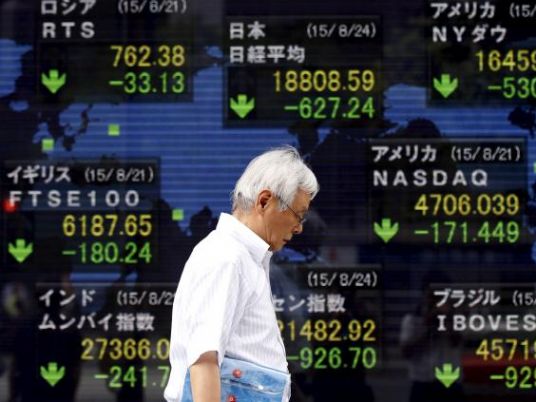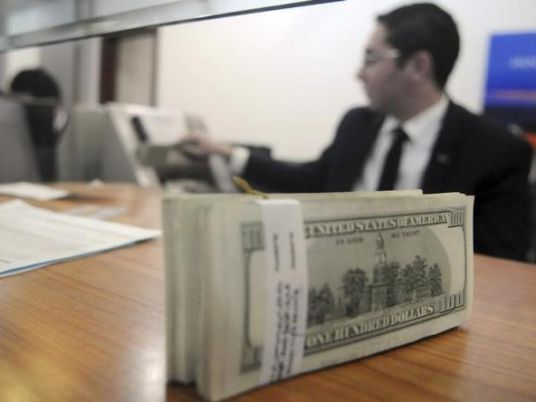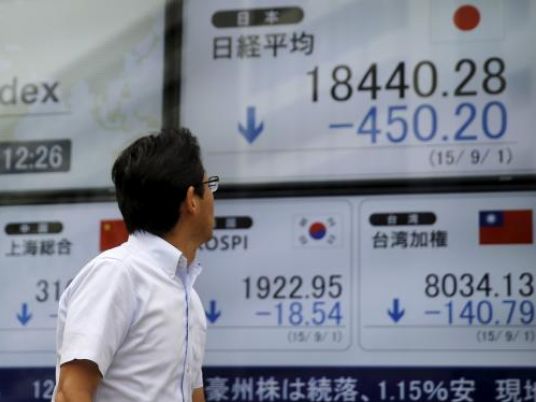
Volatile global markets showed tentative signs of a respite from the recent blood-letting on Tuesday as bargain hunters helped Asian stocks off three-year lows, though share markets in China, epicentre of the rout, suffered another big sell-off.
The MSCI's broadest index of Asia-Pacific shares outside Japan .MIAPJ0000PUS rose 1.1 percent after an initial dip to three-year lows, paring about a quarter of Monday's losses.
Japan's Nikkei .N225, which saw extremely volatile trading, ended 4 percent down.
European shares are seen to open higher, with spread-betters expecting more than 2 percent gains in Germany's DAX .GDAXI and a rise of above 1 percent in Britain's FTSE .FTSE.
"The recent turmoil has left even the most hardened trader gasping for air. And there's probably more to come," said Frederic Neumann, HSBC's co-head of Asian economics research, in a note to clients.
"China's economy continues to slow and the (U.S.) Fed may still hike rates before the end of the year. That puts further cracks into the two main growth pillars for the world economy of recent years: Chinese demand (including commodities) and easy money," Neumann said, even as he added that a re-run of Asia's financial crisis in the late 1990s was unlikely.
U.S. stock futures ESc1 gained 2.0 percent, aiding performance in some markets as signalling that New York markets which plunged on Monday will open stronger later in the day.
"There appears to be buyback as many markets look oversold after panicky selling in the last few days. Even the shares that had little business ties with China were sold," said Yukino Yamada, senior strategist at Daiwa Securities.
Mainland Chinese shares had another calamitous day, with the Shanghai Composite Index .SSEC falling another 7 percent and breaking below the key psychological level of 3,000. The index fell 15 percent the previous three days, including an 8.5 percent collapse on Monday.
"Global investors are cannibalising each other. Calling it a market disaster is not an overstatement," said Zhou Lin, an analyst at Huatai Securities.
"The mood of panic is dominating the market … And I don't see any signs of meaningful government intervention."
Underlining concerns about China, Japanese Finance Minister Taro Aso said on Tuesday he hoped Beijing would take action to stabilise its economy and that Tokyo had no plans for now to unveil its own new economic stimulus package.
MSCI's all country world index .MIWD0000PUS hovered near 10 1/2-month low marked on Monday, when it had fallen 3.8 percent, its biggest fall in almost four years.
Global share markets have been hit by worries that the Chinese economy, the most important engine for the world economy, was growing at a much slower pace than Beijing's 7 percent target for 2015.
Investors are also unnerved by uncertainty over U.S. monetary policy. The Federal Reserve has said it plans to raise interest rates this year for the first time in almost a decade.
The heavy fall in share prices worldwide over the past week has sharply reduced expectations of a U.S. rate hike in September, but the outlook is far from clear.
Atlanta Fed President Dennis Lockhart, whose comments earlier this month sparked expectations of a hike in September, said on Monday that the Federal Reserve will likely begin raising rates "sometime this year."
On Wall Street, the S&P 500 Index .SPX fell 3.9 percent to a 10-month low on Monday. The CBOE volatility index .VIX, a key measure of U.S. equity volatility, shot up to more than 50 percent at one point for the first time since the 2008 global financial crisis.
Because some investors often fund their investment in risk assets by borrowing low-yielding euro and yen, the sell-off in shares helped send both currencies to seven-month highs.
On Monday, the euro rose as high as $1.1715 EUR= while the yen strengthened to 116.15 to the dollar JPY=.
But both currencies stepped back in Asia on Tuesday. The euro slipped 0.7 percent to $1.1531 while the yen retreated to 119.05 to the dollar.
Oil prices also stabilised in Asia after having plunged more than 6 percent on Monday to 6 1/2-year lows.
U.S. crude futures CLc1 traded at $38.73 per barrel, up 1.2 percent on the day, and off Monday's low of $37.75.
Brent crude futures last stood at $43.03 after having fallen to $42.23 on Monday.
Brent still stood not far from $36.20, its low hit in the aftermath of the global financial crisis, having fallen more than 66 percent from last year's peak.



